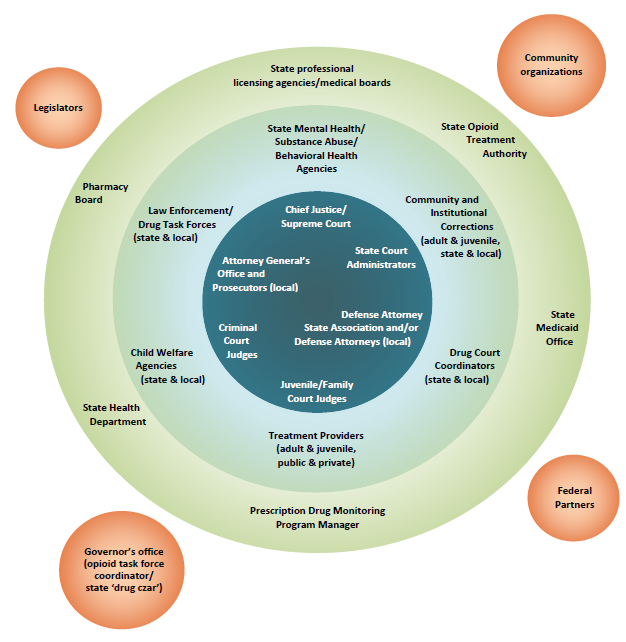
Welcome message from Chief Justice Maureen O'Connor
In August of 2016, a multi-state regional summit was convened in Cincinnati, Ohio by the Supreme Court of Ohio. Over 150 attendees, along with national partners, representing states across the region at the epicenter of the opioid epidemic met to discuss the impact of the opioid epidemic in the region. Summit delegates developed a regional action plan with strategies to combat the opioid epidemic and formed the Regional Judicial Opioid Initiative (RJOI).
In September 2017, the Leadership Committee finalized the RJOI Charter signed by the Chief Justices from the region and established the organizational structure of the initiative. The eight RJOI states include: Illinois, Indiana, Kentucky, Michigan, North Carolina, Ohio, Tennessee, and West Virginia.
Introduction to RJOI from Chairman Judge Duane Slone
RJOI Committees
The Leadership Committee was comprised of the Chief Justices and State Court Administrators of each of the RJOI states and created the organization and decision-making structure of the initiative. They determined the scope of work, goals and strategies, and established committees. They also appointed the members of the Judicial Committee.
The Judicial Committee was comprised of at least two judges from each state as appointed by the Leadership Committee. These “judicial champions” guided the day-to-day work of the initiative. Many of these judges were co-chairs of the project committees which included at least one judge as a co-chair and members from the RJOI general membership.
RJOI membership included representatives from a cross-section of all three branches of state and local governments, along with partners in the private sector and the federal government. Each RJOI state had a team of stakeholders that included a broad array of agency representation as depicted in the figure below.

This project was supported in part by Grant No. 2017-PM-BX-K037 awarded by the Bureau of Justice Assistance. The Bureau of Justice Assistance is a component of the Department of Justice's Office of Justice Programs, which also includes the Bureau of Justice Statistics, the National Institute of Justice, the Office of Juvenile Justice and Delinquency Prevention, the Office for Victims of Crime, and the SMART Office. Points of view or opinions in this document are those of the author and do not necessarily represent the official position or policies of the U.S. Department of Justice.